The weather is beginning to hover around the mid-70’s, and when the sun comes out there is a noticeable lack of humidity. I can feel the garden luxuriating in the cold rain we had this week, and the spring growth in all the plants is amazing. If I had to complain about something, it would be that it’s peak season for tree pollen, which covers everything with a fine coat of yellow powder. For once (knock on wood) I don’t seem to be totally incapacitated by its arrival. Yay. As I said last week, it’s hard to keep up with all the garden news at this time of year, but I’m happy to share some more highlights.
As promised, here’s an image of the dogwood tree that lives at the bottom of the steps from the driveway to my patio. I visited my father-in-law recently and noticed he has the same tree by the side of his house. He said the name of the tree, but I didn’t remember it. When I got home this evening, I consulted my trusty PictureThis app to find out the tree is a Kousa dogwood, otherwise known as a Chinese dogwood, Korean dogwood, or Japanese dogwood. (Apparently, we don’t discriminate among major Asian nations when naming this tree.) I’m not sure if this is the peak, or if more blossoms are on the way. It’s the last dogwood in my yard to bloom each year, and each year it’s worth the wait.
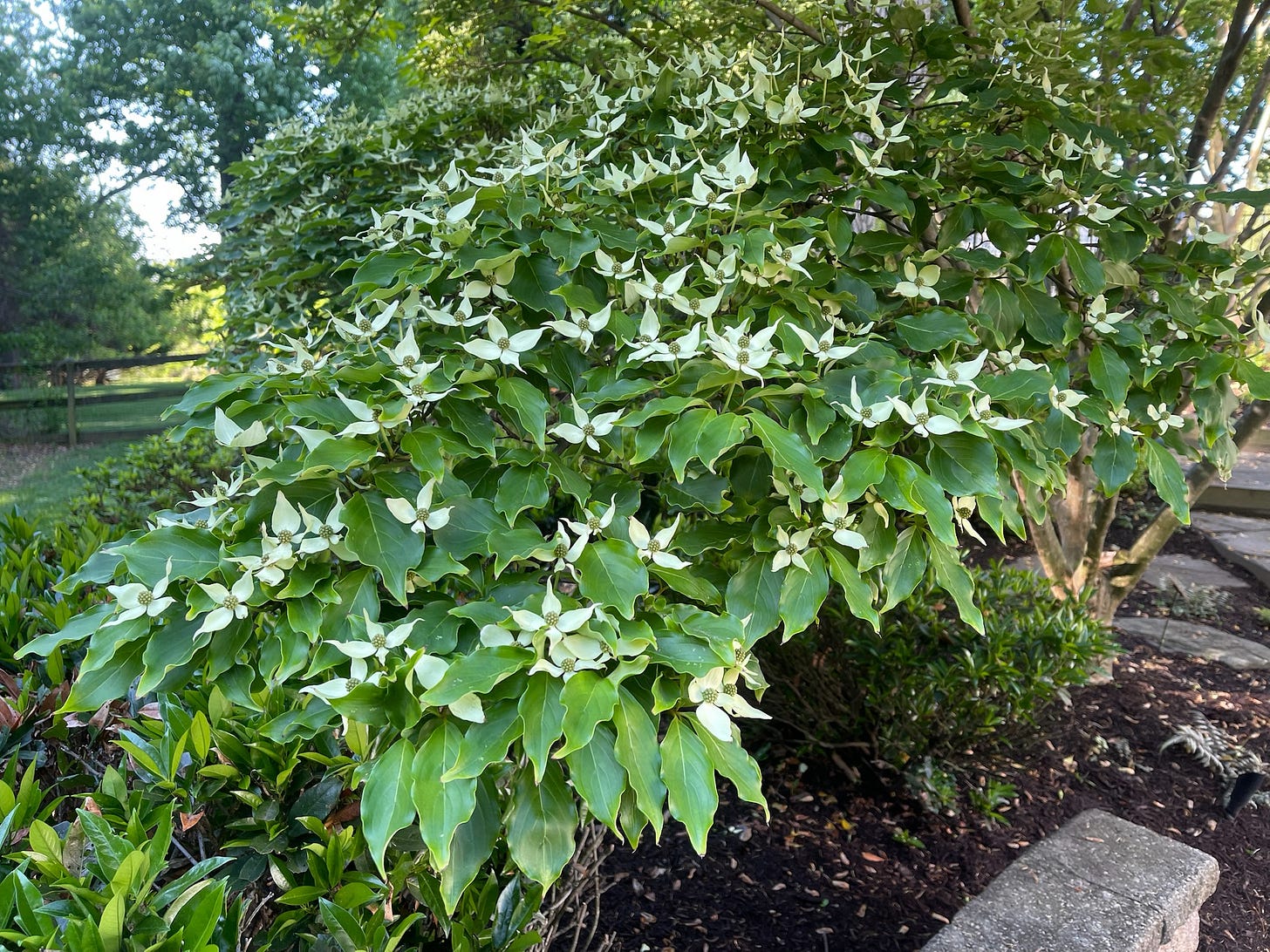
Mother’s Day has arrived and I’m joining the hordes of gardeners adding annuals to their beds to soup them up for color throughout the season. I started out with impatiens this year, mostly because Linda found a great deal on them. They are the prototypical shade-loving annual and I’ve placed them in several shade and partial-shade locations around the garden. I’ve seen impatiens planted with different spacing, depending on what the gardener was trying to accomplish with the installation. I grouped them close together by the steps bed but spaced them farther apart under the hydrangea near the back patio.
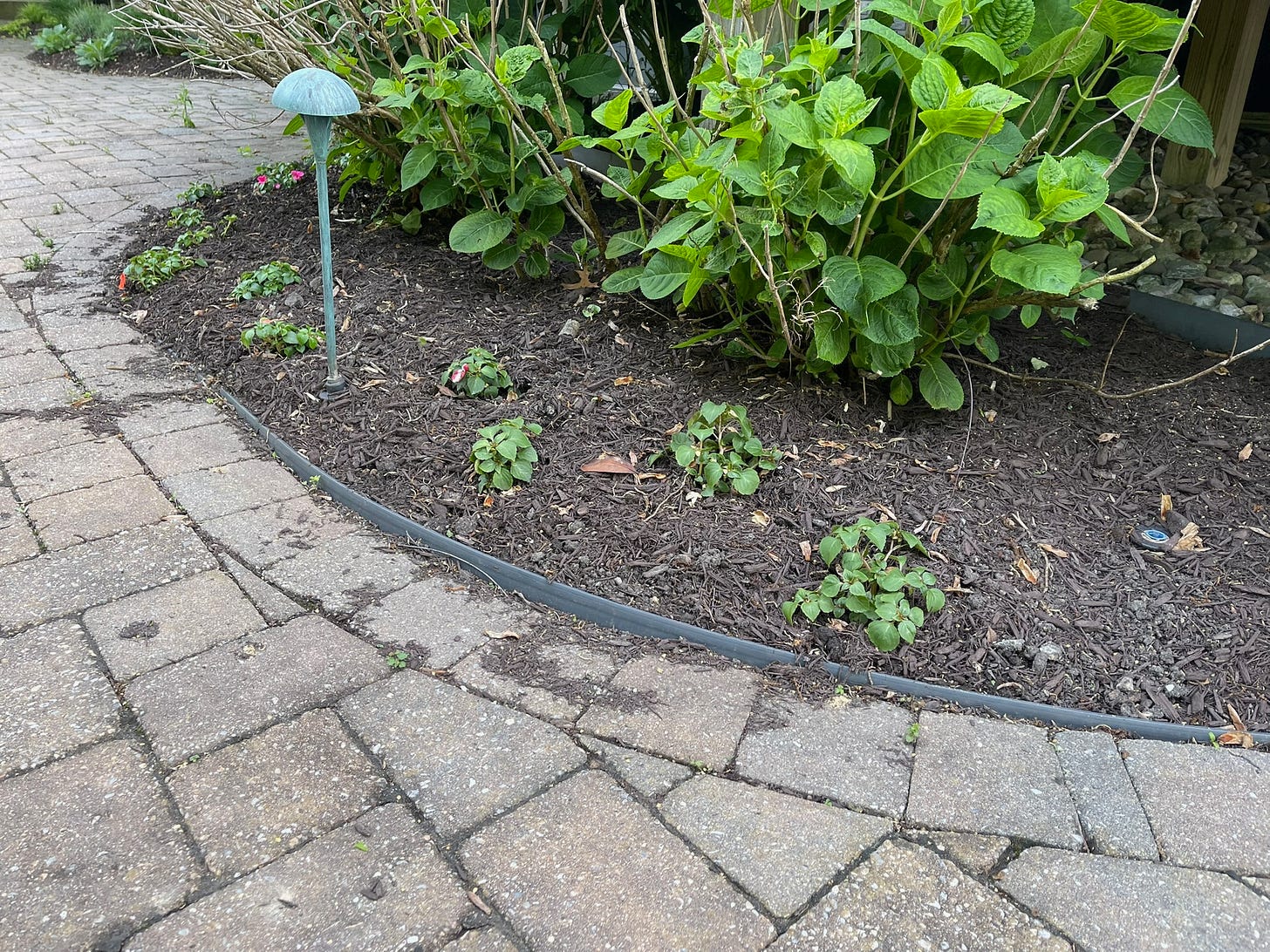
The focal point of the back bed for the past two seasons has been the blue star (amsonia) plants. They don’t bloom for very long in my garden, perhaps because the beds along the house don’t get a lot of sun. In this case the back bed obviously gets enough for the blue star to bloom, at least for a while, and I’m pleased to report they look spectacular this year. Perhaps it’s because of the tough winter, but the plants are slightly smaller than they’ve been the past few years. The flower color is absolutely spectacular. I see there is a spot in the front of the bed that gets more than its share of sun, filled with groundcover (plumbago). I’m considering adding a third blue star or maybe some other partial-sun perennial. Perhaps I could add another toad lily? Hmmm.
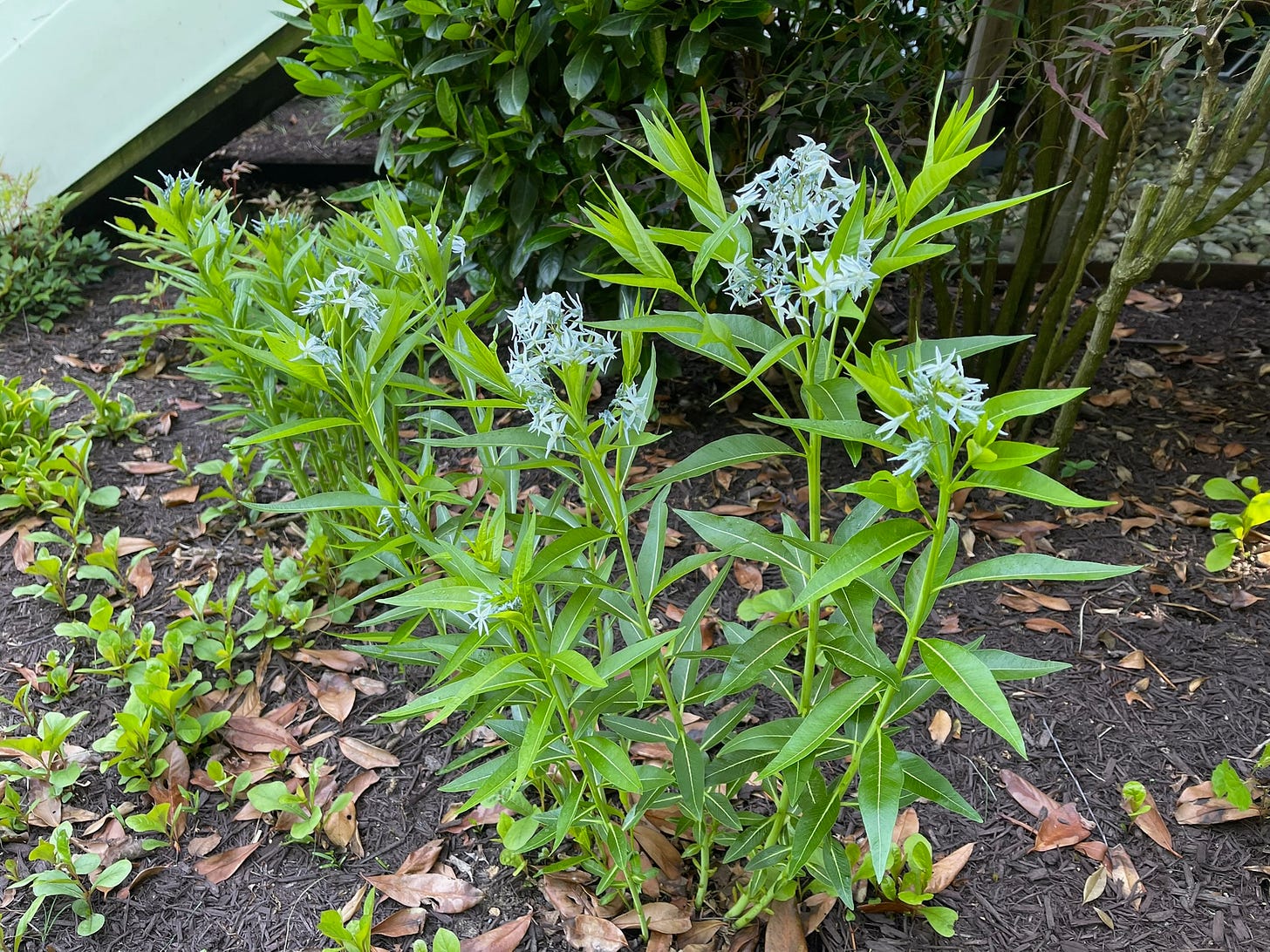
If we move one bed to the left when facing the back of the house, we arrive at the astilbe bed. Last year I planted a groundcover called golden star (Chrysogonum virginianum), apparently a very well-known, shade-loving plant also called green and gold. I’d never heard of it, but I was looking for something to fill the bed near the stepping stones I installed to reach the water spigot on the back of the house. What a pleasant surprise it’s been this spring -- it has slowly grown to cover the area, and the yellow flowers look terrific against the brown mulch. I would guess we are about two to three weeks away from the astilbe getting to full bloom, and when they do, the red astilbe and the golden star should look wild together.
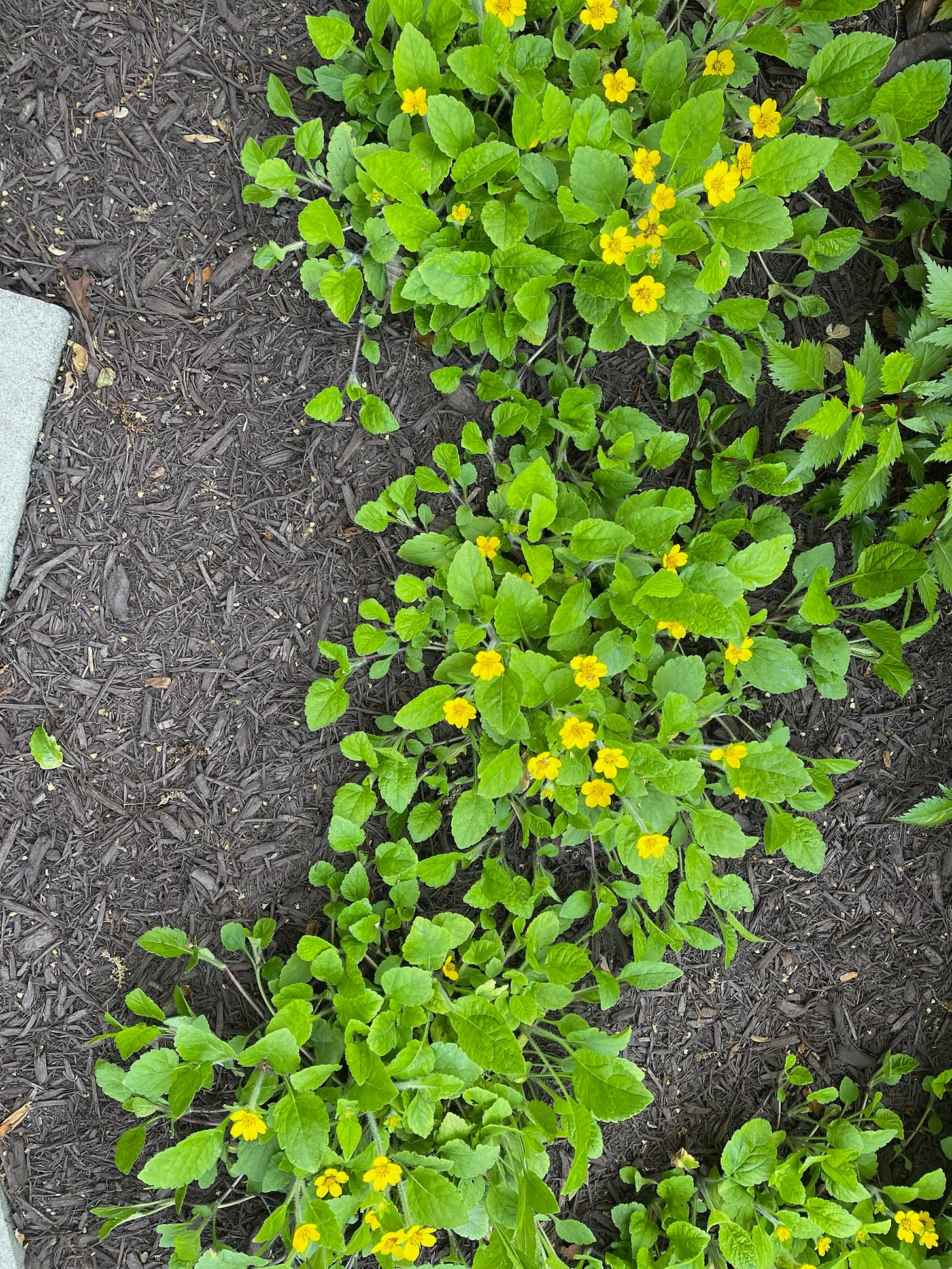
Every year I find myself writing about the hardy begonia (Begonia grandis) that resides on the tree side of the steps bed. It has thrived, completely disappeared, miraculously reappeared, and won several of my highly prized garden awards for Most Surprising Survivor. This week, to my surprise (again), hardy begonia has appeared above ground and announced itself for the season. I must make a note: Don’t expect this plant until early May, and while I’m at it, note that I need to mark its location, so I don’t accidentally dig it up while planting something else in the area. Notably, I almost did just that while planting garden phlox only a week ago.
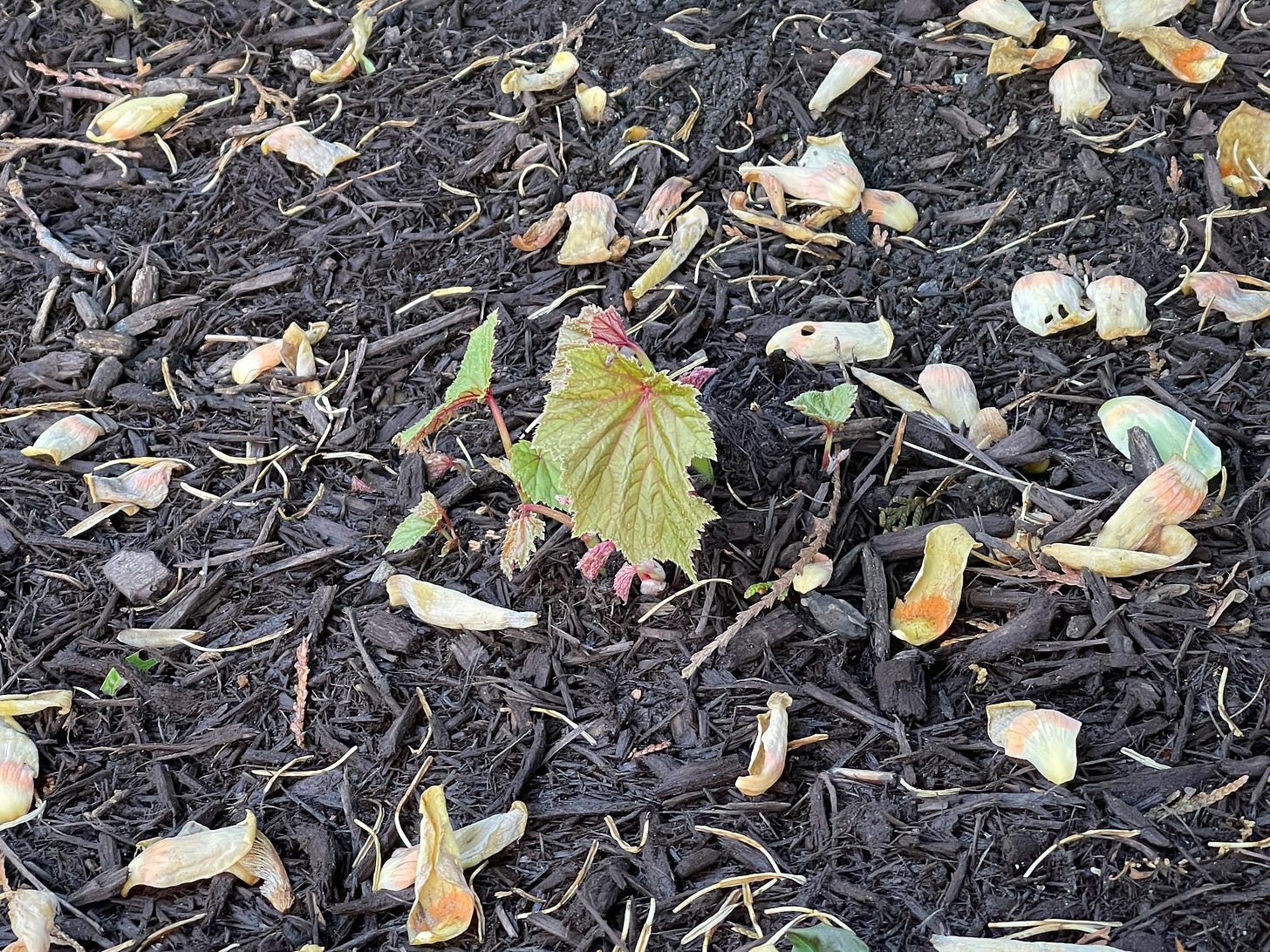
Last week I noted that, much to my surprise, purple iris were making their debut in the sun bed after the yellow iris were well on to full bloom. The iris need help standing upright because they are extremely tall, and because the sun bed is located in something of a wind tunnel. Breezes seem to come rushing from the farm to the north, creating havoc with taller plants in the garden. I’ve resorted to using hoop supports because so many yellow irises have flopped. If I were any kind of a wordsmith, I would do a better job describing the colors in the purple iris, because “purple” certainly doesn’t do justice to the violet petals and white center. In the spirit of the Painful Education of a Type A gardener, here is what I learned from Google AI about bearded iris plants:
The center of a bearded iris flower, where the "beard" is located, is actually part of the falls petal, not a separate structure. Specifically, the beard is a row of fuzzy hairs that runs down the center of each of the three lower petals, which are called the falls. The upper three petals are called standards. I’m glad I could clear that up for you.
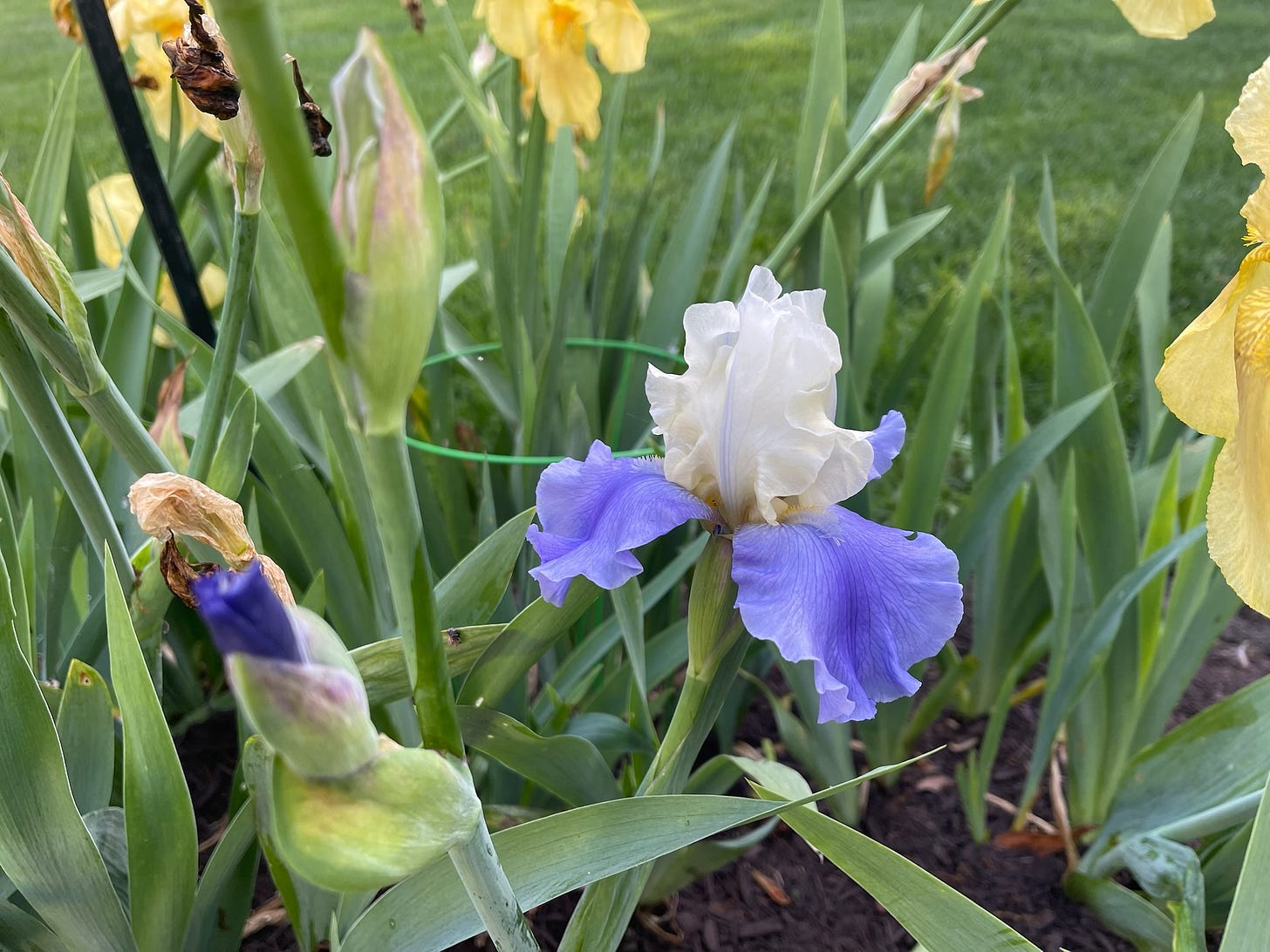
Not to end on a down note, but I’m compelled to fully report the garden news. We have our first casualties of the season, although I’m pretty sure the deer aren’t responsible for all the wounded. We lost a coral bell by the fence to the driveway, and something got to the newly planted phlox in the waterfall bed. I’ve never had deer eat a coral bell before, so this may be a first. The phlox are supposed to be deer resistant, and I don’t see any tracks, so perhaps a pesky rabbit did the damage. I’m now on a once-per-week deer and rabbit spray schedule, trying to limit the damage. I’m especially worried about my hosta and my Autumn Joy sedum. Let the games begin.

I’m sorry to report that I have several other garden tales to spin from last week, but I’ve run out space and it’s time to wrap up this letter. As usual, I want to thank you all for your “likes” and your comments. If you are starving for more “Painful Education of a Type A Gardener” content, you can find all of the previous posts HERE. If you know someone who might be interested in my twisted take on gardening, click on the SHARE button or send them a link to kensolow.substack.com.




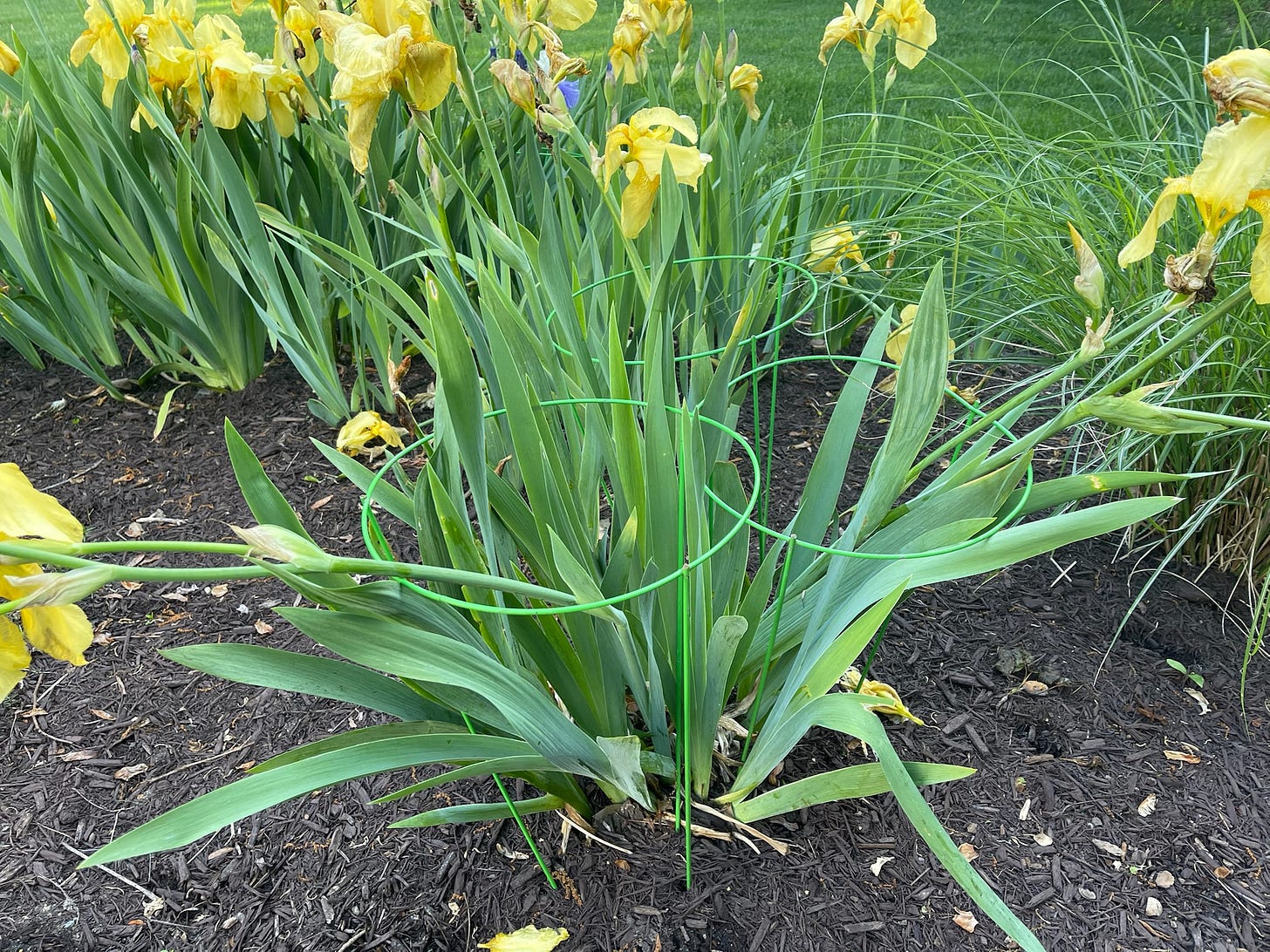
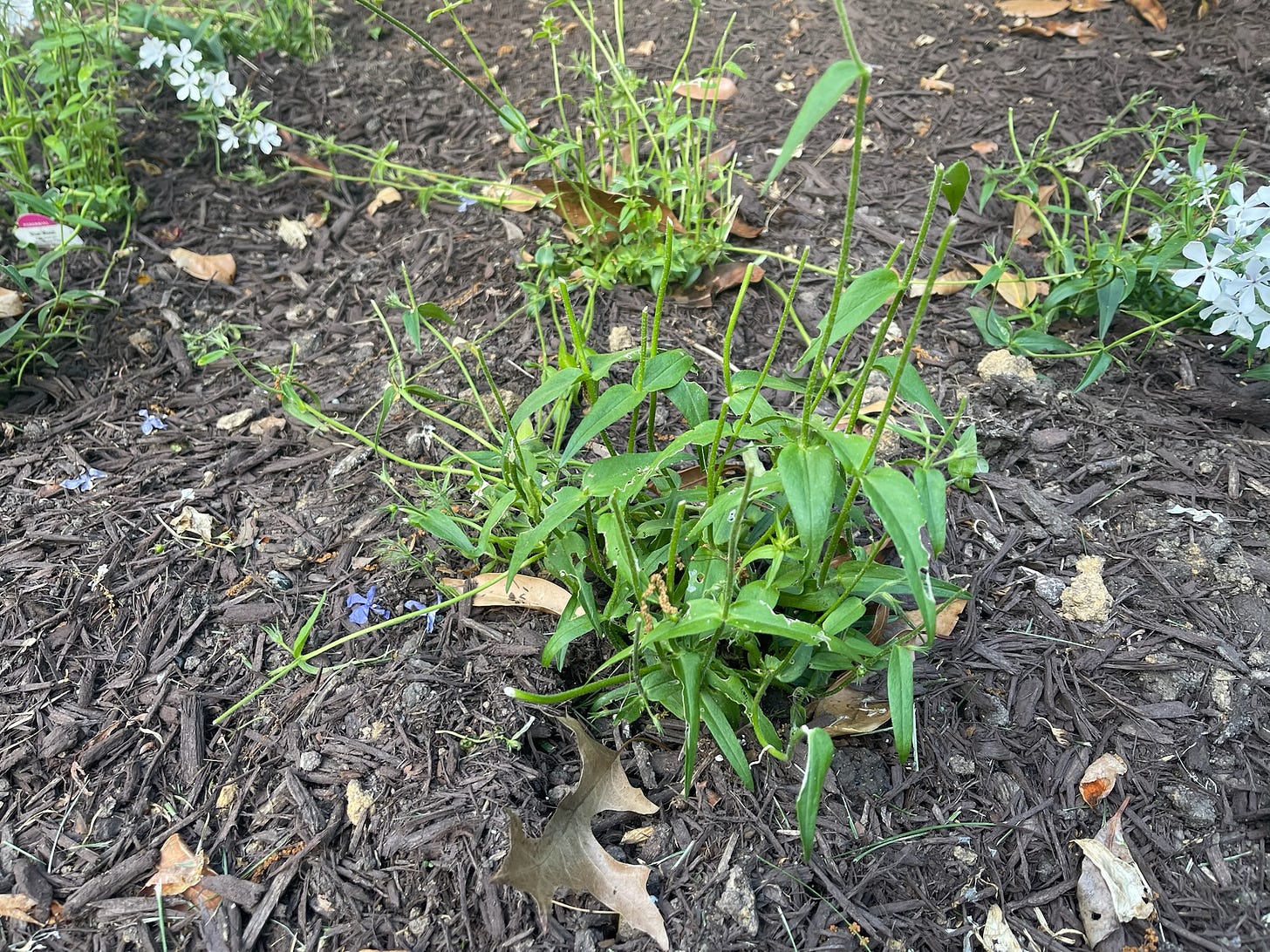
Darn Rabbits !
Our issue is Deer.
Augh!